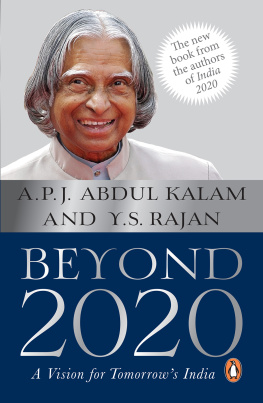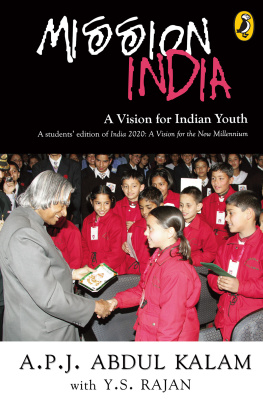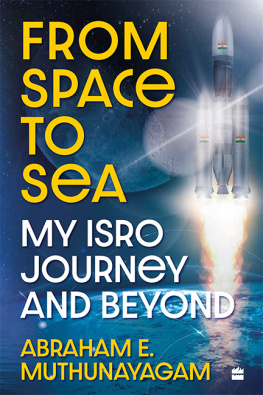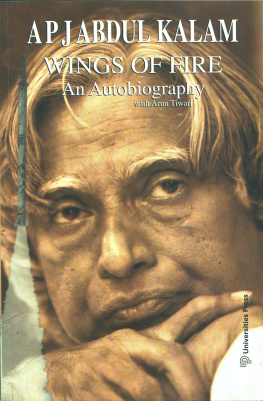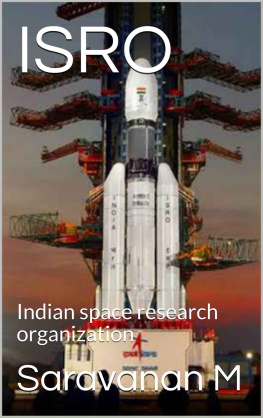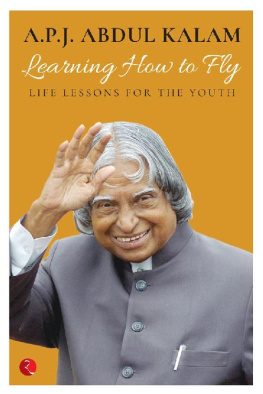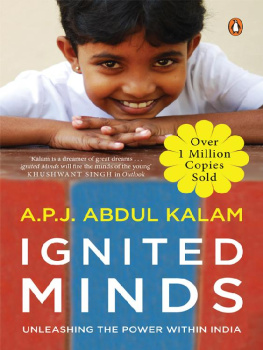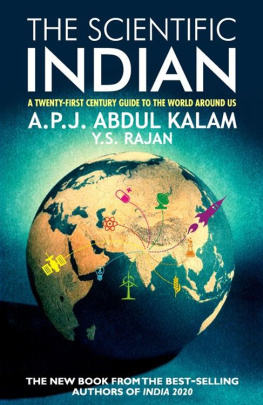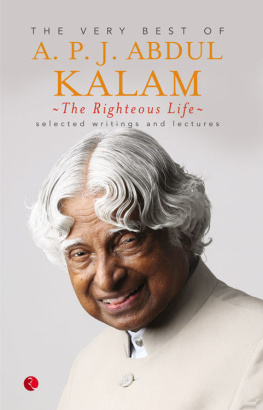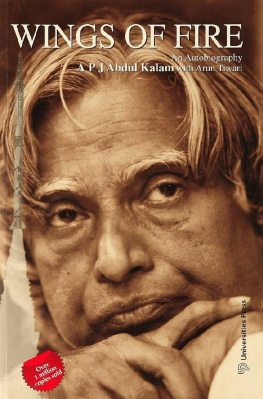Table of Contents
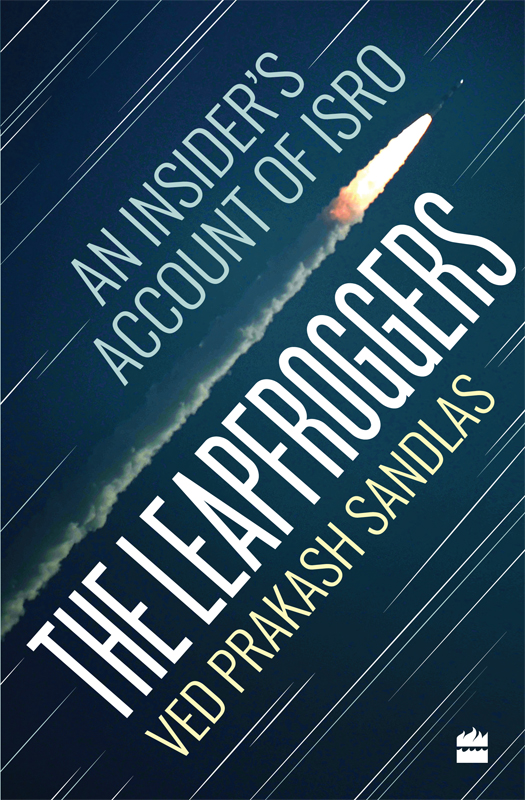
THE LEAPFROGGERS
An Insiders Account of ISRO
VED PRAKASH SANDLAS

CONTENTS


T he seeds for writing this book were sown on 23 January 1984, on the advice of Prof. Satish Dhawan, then Chairman, ISRO (Indian Space Research Organization). I was visiting ISRO HQ, having submitted the Conclusion Report of the SLV-3 Project, titled SLV-3 Objectives and Accomplishmentsafter the successful launch of SLV-3-D2 (the second developmental flight of Indias first satellite launch vehicle, SLV-3) on 17 April 1983and planning to discuss my future at ISRO. Prof. Dhawan, in his characteristic way, came straight to the point: So, enough of rest and celebrations, Ved, what next? And what brings you to Bangalore today? What is your main mission today?
First, I explained my efforts to seek urgent intervention by T.N. Seshan, IFA (Internal Financial Advisor) of the Department of Space (DoS), and to consider special release of House Building Advance (HBA) for me and seven other engineers (all Delhi boys) of VSSC (Vikram Sarabhai Space Centre, Trivandrum)all of who had been allotted flats under the Self Financing Scheme of DDA (Delhi Development Authority) vide their letter dated 15 January 1984 under the condition that the first instalment would be paid by 14 February 1984. Being a once-in-a-lifetime chance, I pleaded for kind consideration and readjustment of HBA provisions, to help us. Prof. Dhawan picked up the phone and dialled Seshan.
Ved had to see you for some HBA. I am holding him with me for some other detailed discussions. He will see you in an hour or so. He looked me straight in the eye and winked.
Your HBA is done. What next?
Then I elaborated on my experience of the last seventeen years, throwing up some alternative options such as joining PSLV (Polar Satellite Launch Vehicle Project) under Dr S. Srinivasan, initiating preliminary work for GSLV (Geosynchronous Satellite Launch Vehicle) with the hope to become its Project Director, or even doing some R & D as Head of the Electronics Division at VSSC. He agreed with the PSLV and Electronics Division options for the time being, provided I stayed back in Trivandrum, emphasizing that it would have to be sorted out by Dr V.R. Gowarikar (Director, VSSC).
He said, GSLV could be at least twothree years away better wait for ASLV (Augmented Satellite Launch Vehicle) to mature. How about INSAT (Indian National Satellite System)? You were once part of the INSAT studies, etc. Why dont you visit MSF (Master Control Facility) at Hasan tomorrow morningI will ask Kale to take you therecome back and meet me again, day after tomorrow?
In the afternoon, I collected the HBA allocation letter from Seshan and informed VSSC to proceed with further formalities. The sanction letter was issued on 27 January, and the cheque was sent to DDA on 4 Februarywhere there is a will, there is a way, and ISRO was the best place to demonstrate that. When I met with Prof. Dhawan on 25 January, on not finding me much interested in MCF, he said, OK. Think about it. As Director, MCF, you will be part of the INSAT Coordination Committee, interacting with INSAT users in DelhiDoT (Department of Telecommunications), Doordarshan, IMD (India Meteorological Department), etc.opening up a whole lot of opportunities for your future. And in the meantime, start writing down your experiences with SLV-3, its challenges, management methods, failures and successes. And dont forget to include all those stories and jokes which got created at SHAR (Sriharikota Range).
The concept and scope of this book are based upon the famous leapfrogging philosophy propagated by Dr Vikram A. Sarabhai, the creator of the Indian space programme: To us, there is no ambiguity of purpose we are convinced that if we are to play a meaningful role nationally, and in the community of nations, we must be second to none in the application of advanced technologies to the real problems of man and society, and the courage to leapfrog to state-of-the-art engineering and technology pursuits rather than [make] step-by-step scientific developments Indeed, this is the only way in which I can see the country leapfrogging into a position where it can hope to meet more developed nations on equal terms.
In fact, soon after the start of Space Race with the launches of Sputnik on 4 October 1957 and Explorer on 31 January 1958, in August 1961, the Government of India entrusted the responsibility of looking after space research and peaceful uses of outer space to the Department of Atomic Energy (DAE), followed by the constitution of INCOSPAR (Indian National Committee on Space Research) under the chairmanship of Prof. Vikram A. Sarabhai. Of course, unlike others, we did not start with first using space for military applications. Interestingly, the two popular Indian epicsRamayana and Mahabharataspectacularly demonstrate imagination and potential of rocketry and archery-aided firepower in ancient times, prompting historians and scholars to suggest that, perhaps, India had also contributed significantly to early developments in the realms of science and technology, in addition to metallurgy, mathematics, medicine and astronomy. The leapfrogging philosophy motivated ISRO to initiate the development of Satellite Launch Vehicle (SLV-3) as early as 1968, when even our tiny sounding rockets were still under nascent development. Today, with the operational PSLV and GSLV, we are self-sufficient and really second to none in building and launching any satellites required for Indian needs; but from earlier societal and social application orientation, Indian Space goals have grown and matured into: commercial satellites, operational launch vehicles and nuclear-enabled missiles; Chandrayaan and Mars missions; and fulfilment of the ambition of a manned missionencompassing all possible scientific, economic and strategic objectives.
Leapfrogging is not like long-jumping, where one builds momentum by a long enough run, and then jumps to land on soft and loose sand. Leapfrogging relies upon stored energyin the legs, muscles, brain and the entire bodyto leap above unexplored territory, with calculated risk, sometimes falling flat on the face, and sometimes exposing the dirtier underside.
This is a storybook, rather than a history or chronology document. In fact, it is more appropriate to call it a sagaa chain of stories, jumping back and forth from one event to another, sometimes side-stepping, sometimes leapfrogging, and interwoven with interesting anecdotes. I have tried to reflect upon authentic ISRO culture: styles, values and characteristics of ISRO people, particularly the first and original three layers of hierarchy, consisting of those who joined during the period 19621967 (about fifty of them), their aspirations and ambitions, their beliefs, prejudices, superstitions and limitations, particularly of members of the Core Team of the SLV-3 Projectthe most ambitious and glamorous project of VSSC and ISRO during 19721983.
Most ISRO people were highly individualistic, experts in their own fields, very possessive of their specializations, very argumentative in technical discussions, and sometimes very stubborn. But, somehow, they were excellent team members in group activities. There were occasions when they would fight tooth and nail, for several hours, even through the night, and, after the final decision, come out clean with identical views. With the exception of Dr Vikram Sarabhai, almost all of them came from a middle-class, even lower middle-class, background. They were exceptionally well qualified and meritorious scientists or engineers and had joined VSSC to earn a living through regular government jobs. The best way to describe them and their culture is to reiterate some popular ISROismsISRO is ISRO, ISRO People are ISRO People, once an ISRO person, always an ISRO personwithout any further adjectives and qualitative explanations. I recall some situations of arguments with outsiders, in higher-level meetings in Delhi, when typical remarks such as Oh, these ISRO people! They wont descend to real ground were made.


